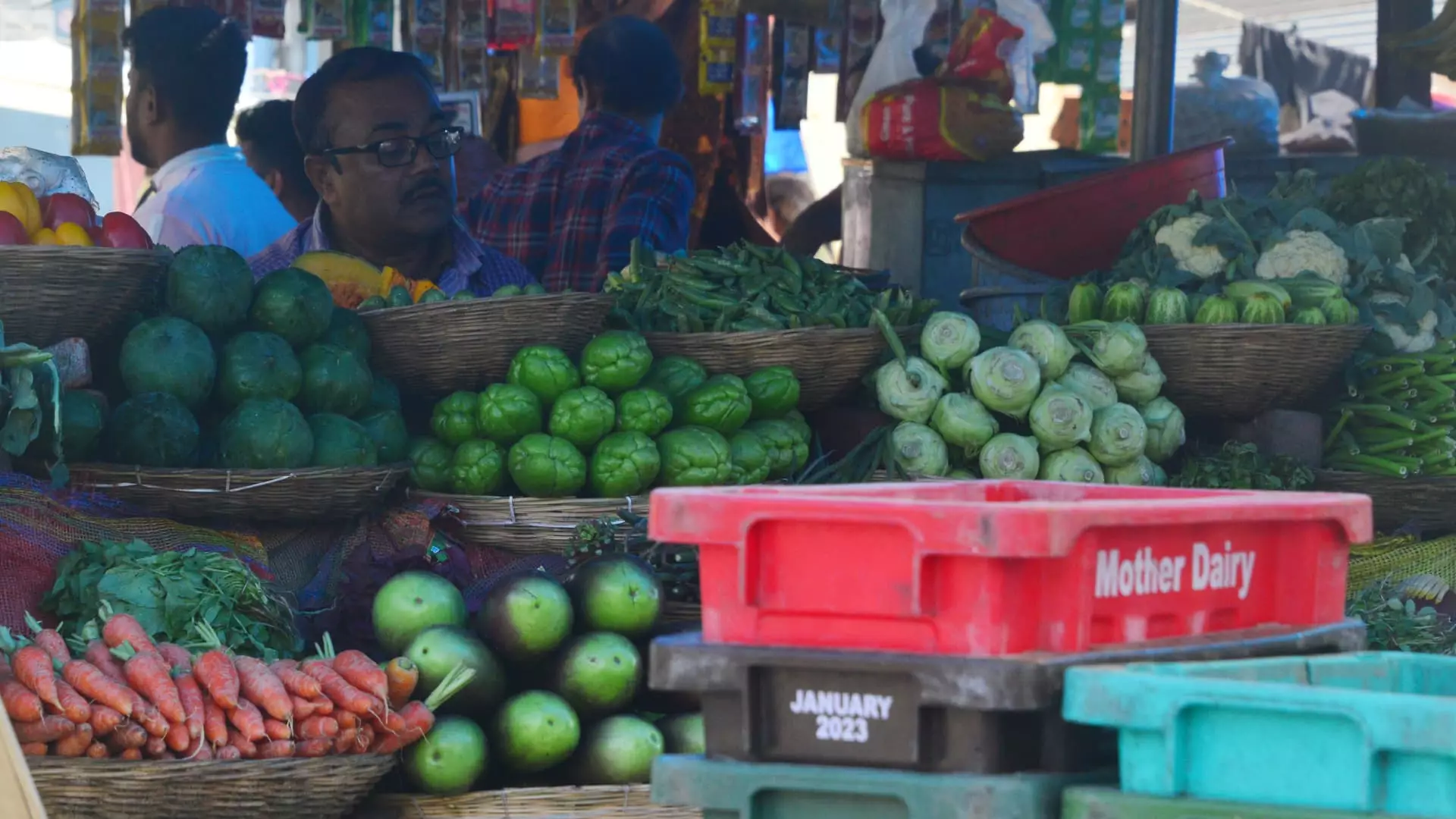India’s inflation rate has shown a declining trend for the second consecutive month, with December’s figures reported at 5.22%. This performance fell slightly below analysts’ expectations, who had anticipated a 5.30% rise. Notably, this marks the slowest growth in prices observed since August 2024, when inflationary pressures began to escalate significantly. In stark contrast, the inflation rate had peaked in October, reaching 6.21%, which placed it above the Reserve Bank of India’s (RBI) tolerance threshold of 6%. The new data from the Ministry of Statistics and Programme Implementation (MoSPI) hints at a significant shift in India’s economic climate, raising hopes for potential interest rate reductions in the future.
A critical factor influencing the overall inflation rate is the performance of food prices, which is pivotal to the average consumer’s experience. In December, food inflation eased to 8.39%, a decrease from the 9.04% recorded in November. The MoSPI highlighted a “marked decline” in inflation across various categories, including vegetables, cereals, and confectionary products. Particularly, inflation in the vegetable sector reflected a noteworthy decrease, down to 26.56% in December from November’s 29.33%, and dramatically lower than October’s dizzying high of 42.18%. Despite some individual items like peas and garlic experiencing significant year-on-year price hikes, the overall perspective appears more positive as agricultural adjustments and seasonal harvests begin to take effect.
Agriculture plays a vital role in India’s economy, contributing substantially to the country’s GDP. Reserve Bank Governor Sanjay Malhotra, who took office in December, has expressed optimism that the food sector will witness easing pressures as the fiscal year progresses. Anticipated seasonal corrections in vegetable prices, alongside favorable conditions for winter crops and stable cereal buffer stocks, are expected to play a vital role in stabilizing overall prices. The transition into the fiscal year continues to evolve, and Malhotra’s predictions of a 4.8% inflation rate by March 2025 reinforce this outlook, even as economic concerns persist.
The recent inflation data presents the RBI with a unique challenge as it navigates the delicate balance between controlling inflation and sustaining economic growth. India’s economy showed a modest growth rate of 5.4% in the second quarter of the fiscal year, a figure that fell short of earlier economic forecasts and was described as nearing a two-year low. The interplay between declining inflation and slowing economic growth suggests that the RBI may be inclined to cut interest rates at the upcoming Monetary Policy Committee (MPC) meeting in February. Some experts predict a modest 25 basis point reduction to the repo rate, potentially lowering it to 6.25%.
However, this monetary easing strategy holds its complexities, particularly considering the ongoing depreciation of the Indian rupee. Just recently, the currency reached a concerning low of 86.58 against the US dollar, amplifying the risks associated with loosening monetary policy. A weak rupee can exacerbate inflation by increasing the cost of imports and thus complicating the RBI’s ability to lower rates without jeopardizing the currency’s stability.
Despite these uncertainties, analysts, including those from Bank of America, project a recovery in India’s GDP by 2025, albeit with a note of caution regarding the strength and sustainability of this recovery. Various sectors, including agriculture and core industrial production, are expected to remain resilient, while other areas, particularly credit growth and consumption, may continue to face headwinds. Last month, the Bank of America downgraded its GDP forecast for the fiscal year ending March 2025 from 6.8% to 6.5%, a figure that remains closely aligned with the RBI’s more conservative estimate.
India’s inflation dynamics reflect a complex interplay of agricultural performance, monetary policy, and global economic conditions. As inflation rates decline and economic forecasts adjust, the path forward for both the RBI and the broader economy remains intricate. Policy decisions taken in the coming months will undoubtedly impact not only the inflation outlook but also the overall health of India’s economic landscape, demanding continued vigilance and strategic foresight.


Leave a Reply